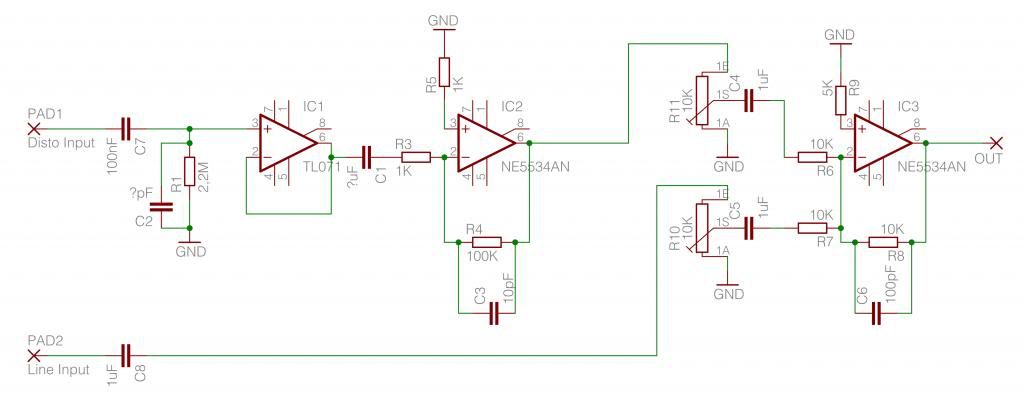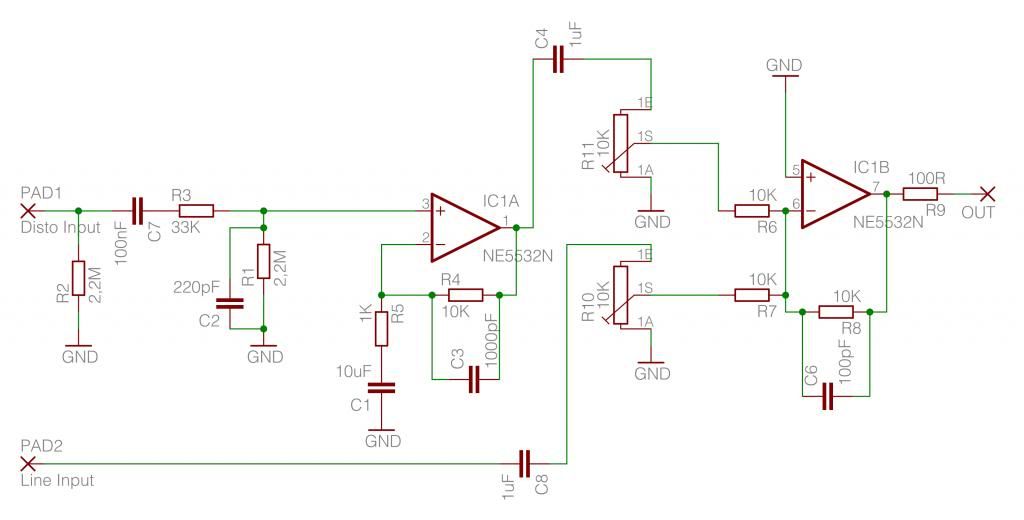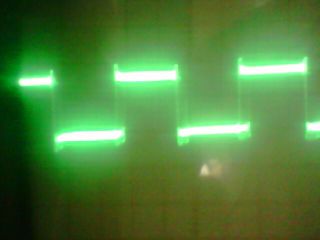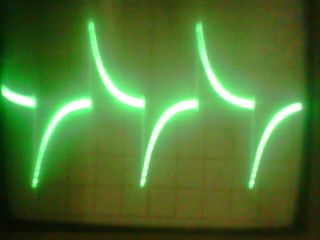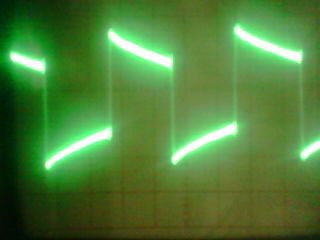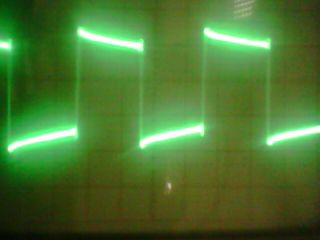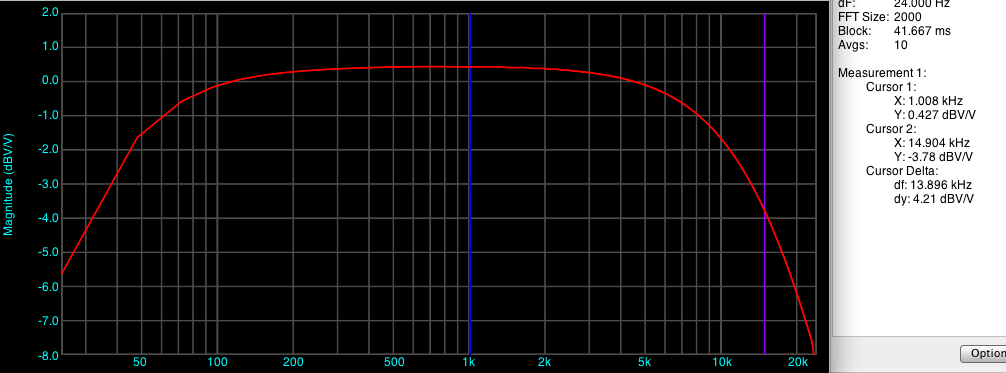Gachet
Well-known member
Hi everyone
I want to build a 2 input mixer.
The particularity is that One input is line level and the Second input is guitar pedal level ("Disto Input")
The purpose is to parralel line level input signal with distorted signal from guitar pedal.
I need some help to find correct cap and resistor values. I've put some values already, but I'm unsure about it.
Do I need extra resistor and cap in parallel with ground on output stages?
I am not concerned phase wise as Ican flip the phase of my distorted signal with reamp box transformer based I use for feeding the distortion.
The output will feed a DRV134.
Here is my schematic.
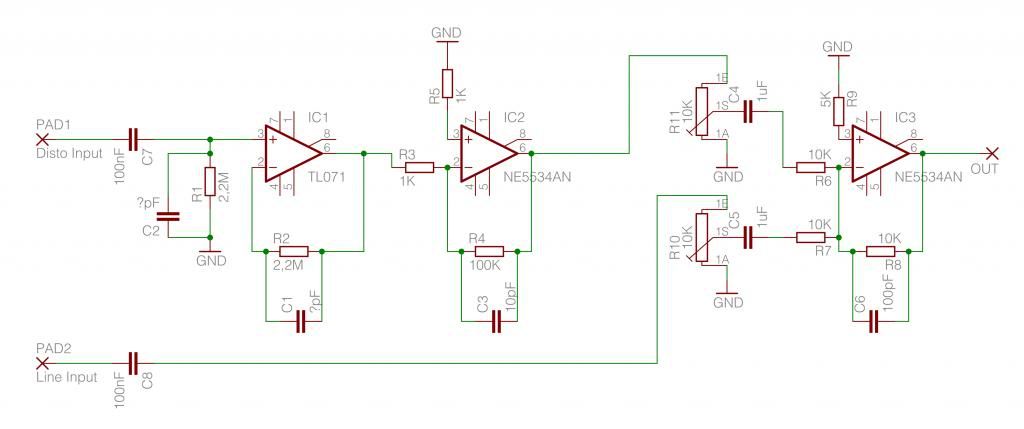
Any comment or help will be much appreciated as I'm not very skilled in electronic.
Thanks
I want to build a 2 input mixer.
The particularity is that One input is line level and the Second input is guitar pedal level ("Disto Input")
The purpose is to parralel line level input signal with distorted signal from guitar pedal.
I need some help to find correct cap and resistor values. I've put some values already, but I'm unsure about it.
Do I need extra resistor and cap in parallel with ground on output stages?
I am not concerned phase wise as Ican flip the phase of my distorted signal with reamp box transformer based I use for feeding the distortion.
The output will feed a DRV134.
Here is my schematic.

Any comment or help will be much appreciated as I'm not very skilled in electronic.
Thanks



